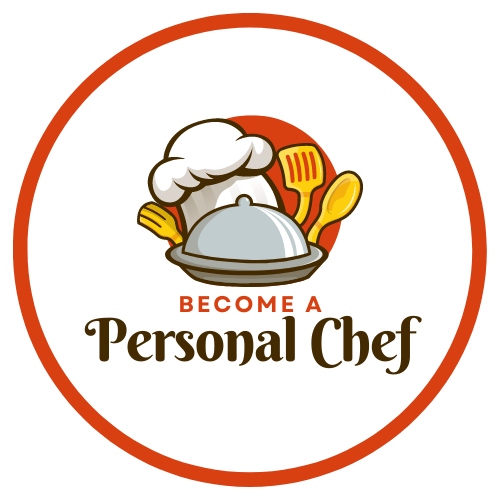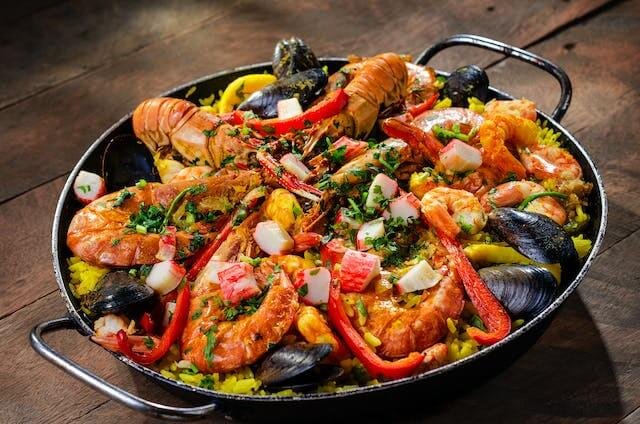Table of Contents
ToggleSpanish Food for Personal Chefs
As personal chefs, our culinary journey takes us around the globe, exploring different cuisines and flavors. Today, we are venturing into the heart of Europe to explore the vibrant and diverse world of Spanish cuisine. This rich and ancient culinary tradition has been shaped by a myriad of cultural influences, resulting in a unique and delicious array of dishes.
Spanning across different regions, Spanish food is characterized by its use of fresh ingredients, bold flavors, and simple cooking techniques. It is also heavily influenced by the country’s geography, with seafood being prominent along the coast and hearty stews and meats in the mountainous areas. As personal chefs, this diversity allows us to create a wide variety of menus for our clients based on their preferences and dietary needs.
Aspiring personal chefs need to offer something different than traditional chefs who specialize in one or two kinds of cuisines. I’ve written an extensive article with links to many cuisines for your consideration – World Cuisine for Personal Chefs
Key Ingredients in Spanish Cuisine
Spanish cuisine is characterized by its use of fresh, local ingredients that reflect the country’s varied geography and climate. Some of the key ingredients include olive oil, paprika, saffron, anchovies, garlic, onions, ham (Jamón), herbs, olives, bread, cheese, and rice. These ingredients are used to create the unique and flavorful dishes that have made Spanish cuisine famous around the world.
Olive oil, or Aceite de Oliva, is an essential ingredient in Spanish cooking. It is used for everything from frying to making sauces and dressings. Spain is one of the largest producers of olive oil in the world, and its high quality adds a distinct flavor to many Spanish dishes.
Paprika, or Pimentón in Spanish, is another staple ingredient in Spanish cuisine. It comes in various forms, including sweet, smoked, and spicy. Paprika is often used to season meat dishes such as chorizo sausage and stews like paella.
Saffron (Azafrán) is a highly prized spice in Spain, known for its unique flavor and beautiful yellow color. It is the most expensive spice in the world, but a little bit goes a long way in adding depth and complexity to dishes like arroz con pollo (chicken with rice) and seafood paella.
Tomatoes (Tomates) are used in many traditional Spanish dishes, adding a bright and fresh flavor. They are often used to make sauces such as sofrito, which forms the base of many stews and soups.
Garlic (Ajo) is another essential ingredient found in nearly every Spanish kitchen. It adds a pungent and savory flavor to dishes such as gazpacho (cold tomato soup) and garlic shrimp.
These are just a few key ingredients that give Spanish cuisine its distinct and delicious flavors. Other common ingredients include olives, olive oil, saffron, chorizo (spicy sausage), and various types of peppers.
In addition to these traditional ingredients, Spanish cuisine also incorporates influences from other cultures such as North African and Latin American. This fusion of flavors can be seen in dishes like empanadas (savory pastries filled with meat or vegetables) and arroz con leche (rice pudding).
One unique aspect of Spanish cooking is the use of tapas, which are small plates of food meant for sharing. This allows diners to sample a variety of different dishes and flavors in one meal.
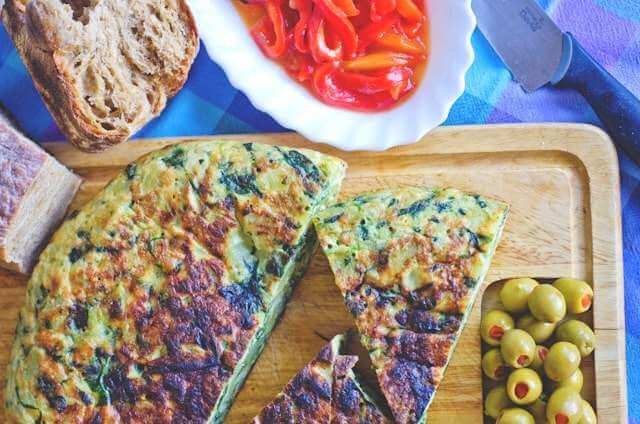
Sourcing Ingredients Locally
Elevate your culinary experience with authentic Spanish ingredients. While you can find many of them in local supermarkets, some may require a trip to a specialty Spanish grocery store. Look for labels that indicate the origin from Spain, as the flavor profiles can vary. Choose Spanish olive oil for that extra touch of authenticity that will make your dish truly memorable.
However, if certain ingredients are not available locally, suitable substitutes can often be found. For instance, you could substitute Bomba rice with Arborio or Carnaroli.
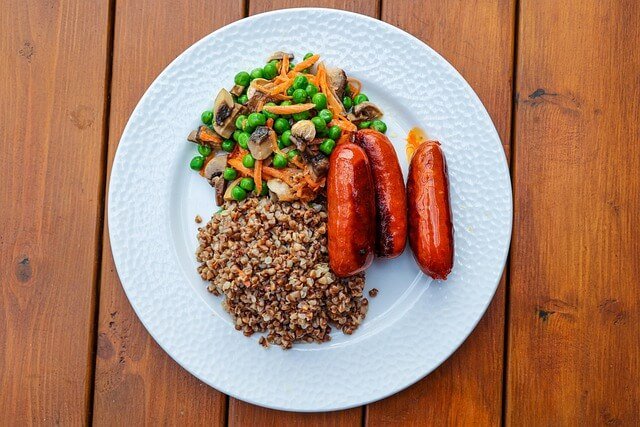
Traditional Cooking Methods
Spanish cuisine employs a variety of cooking methods, including grilling (for dishes like churrasco), baking (for dishes like empanadas), sautéing, and stewing (for dishes like cocido). These methods have been passed down through generations and are still used today to create delicious and authentic Spanish dishes.
Grilling is a popular cooking method in Spain, especially for meats like beef, pork, and chicken. The traditional way of grilling involves using an open flame over charcoal or wood, which gives the meat a smoky and rich flavor. A common example of grilled Spanish cuisine is churrasco, a dish made with marinated beef that is cooked on a large skewer over hot coals.
Baking is another commonly used method in Spanish cuisine. Many savory dishes, such as empanadas (stuffed pastries), are baked in the oven until they are golden brown and crispy. Baking is also used for desserts like flan and tarta de Santiago, a traditional almond cake.
In addition to grilling and baking, stews and soups are also popular in Spanish cuisine. These hearty dishes often feature a variety of vegetables, meats, and legumes cooked together for hours to create rich flavors. One well-known example is the cocido madrileño, a stew made with chickpeas, various types of meat, and vegetables like carrots, potatoes, and cabbage.
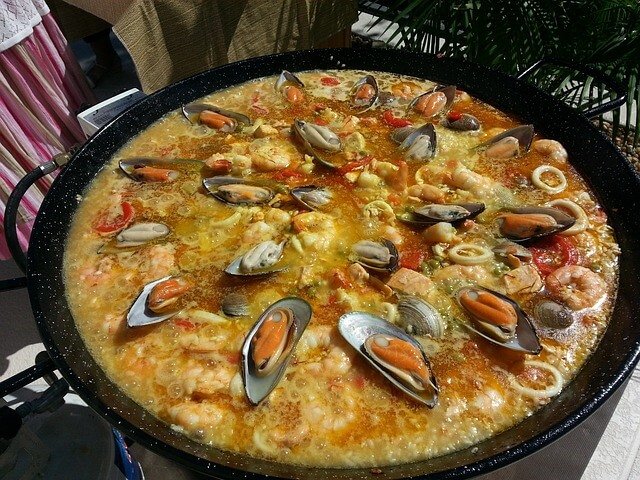
Dominant Flavors of Spanish Cuisine
Spanish cuisine is known for its bold, robust flavors with a balance of sweet, savory, and smoky elements. The dominant flavors come from the liberal use of spices like saffron and paprika, as well as garlic and olive oil. These ingredients give Spanish dishes their distinct taste and aroma that have become popular all over the world.
Saffron is one of the most expensive spices in the world, but it is an essential ingredient in traditional Spanish cuisine. It has a unique flavor that adds depth and complexity to dishes, making it one of the dominant flavors in many Spanish recipes. Saffron is derived from the dried stigmas of the crocus flower and has a deep red color that gives dishes a vibrant hue.
Another key ingredient in Spanish cuisine is paprika. This spice comes from ground red bell peppers and can range from mild to spicy. The type of paprika used depends on the dish being prepared, with smoky versions used for meat dishes like chorizo and sweet versions used in seafood and vegetable dishes.
Spanish cuisine also heavily relies on the use of garlic, olive oil, and herbs such as thyme, oregano, and rosemary. These ingredients not only add flavor but also contribute to the health benefits often associated with Mediterranean cuisine.
One of the most iconic Spanish dishes is paella, a rice dish that typically includes saffron-infused rice, paprika-seasoned chicken or seafood, and a variety of vegetables like bell peppers and peas.
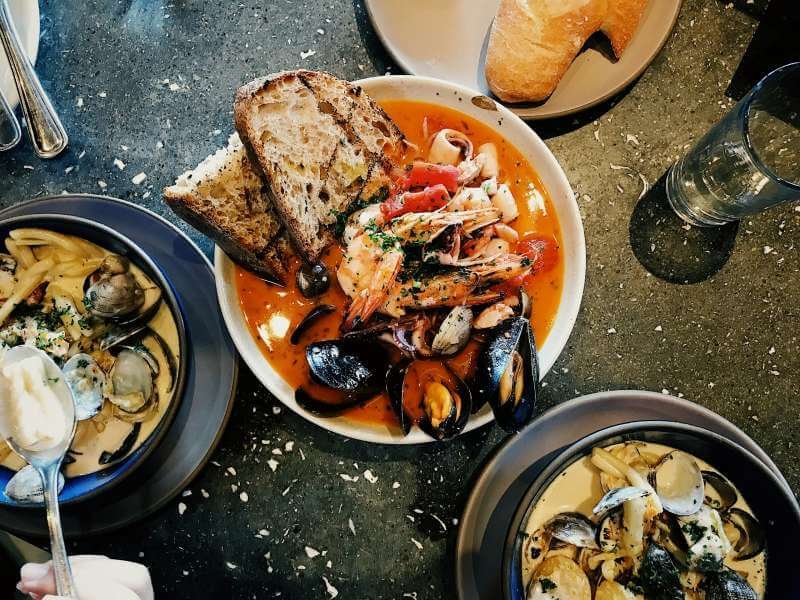
Spice Level Adjustment
While Spanish cuisine is not typically spicy, some dishes may contain a bit of heat from spices like ñora peppers or pimentón de la Vera. The spice level can usually be adjusted to suit your client’s preference by using less of the spicy ingredient or eliminating it altogether. If you are unsure of your client’s tolerance for spiciness, it is always best to err on the side of caution and use less spice. You can also offer options such as adding a dollop of cooling yogurt or sour cream to balance out the heat.
Cooking with Herbs
Fresh herbs are an essential component of Spanish cooking, adding depth and flavor to dishes. Here are some commonly used herbs in Spanish cuisine:
1. Parsley – This versatile herb is used both as a garnish and as a main ingredient in dishes like gazpacho and paella.
2. Thyme – Known for its earthy and slightly sweet flavor, thyme pairs well with seafood, poultry, and vegetables in Spanish dishes.
3. Rosemary – Used in both fresh and dried form, rosemary adds a fragrant and pine-like aroma to stews, meats, and marinades.
4. Oregano – A staple in Mediterranean cuisine, oregano is used in Spanish dishes like empanadas and sofrito for its distinct peppery flavor.
5. Bay leaves – These large, aromatic leaves are often added to soups and stews to infuse them with a subtle herbal flavor.
When cooking with herbs, it is important to use fresh or high-quality dried herbs for maximum flavor. Herbs should also be added towards the end of cooking as their flavors can diminish if cooked for too long.
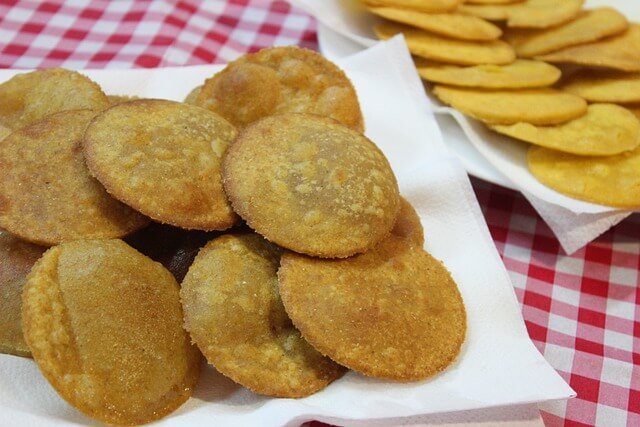
Cultural Significance of Spanish Cuisine
Spanish cuisine has a rich history dating back to ancient times. Meals are often seen as a time for family gatherings and celebrations. Many dishes have a story behind them that reflects the history and culture of Spain. Spanish cuisine is also heavily influenced by the country’s geography, climate, and agriculture. In this article, we will explore the cultural significance of Spanish cuisine and its importance in the country’s history.
Geographical Factors:
Spain is located on the Iberian Peninsula, surrounded by water on three sides and bordered by France to the north. This unique location has greatly shaped Spanish cuisine. The coastal regions are known for their seafood dishes, while inland areas rely more on meats and vegetables. The diverse landscape of Spain also plays a role in its cuisine, with mountainous regions producing different types of cured meats and cheeses.
Moorish Influence:
During the Middle Ages, Spain was occupied by the Moors for over 700 years. This lengthy period of influence has left a lasting impact on Spanish cuisine. The Moors brought with them new techniques and ingredients, such as rice, citrus fruits, almonds, and spices like saffron and cumin. These flavors are still prominent in many Spanish dishes today.
Regional Variations:
Just like its landscape, Spain’s cuisine varies greatly from region to region. Each area boasts its own unique specialties based on traditional recipes passed down through generations. For example, the Basque Country is known for its seafood dishes while Catalonia is famous for their hearty stews and tapas. This diversity adds to the richness of Spanish cuisine and reflects the country’s diverse cultural influences.
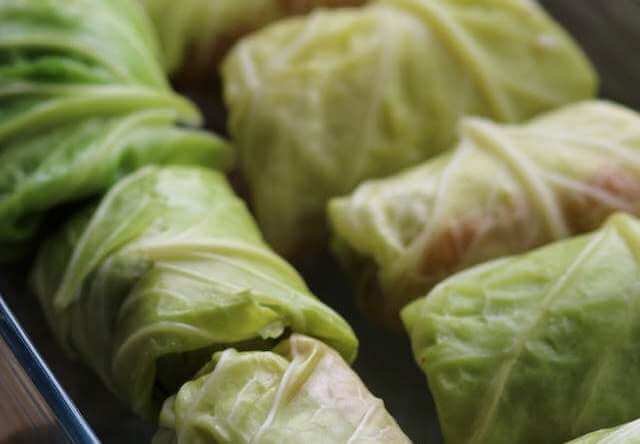
Dietary Considerations
When preparing Spanish cuisine, it’s important to consider dietary restrictions. Many Spanish dishes can be adapted to be vegetarian or vegan-friendly, and gluten-free options are also available.
However, it’s always important to communicate any dietary restrictions or allergies to your personal chef so they can make the necessary adjustments. Some common Spanish ingredients that may pose a concern for certain dietary restrictions include cured meats such as chorizo or jamón, dairy products like cheese and cream, and wheat-based items like bread and pasta.
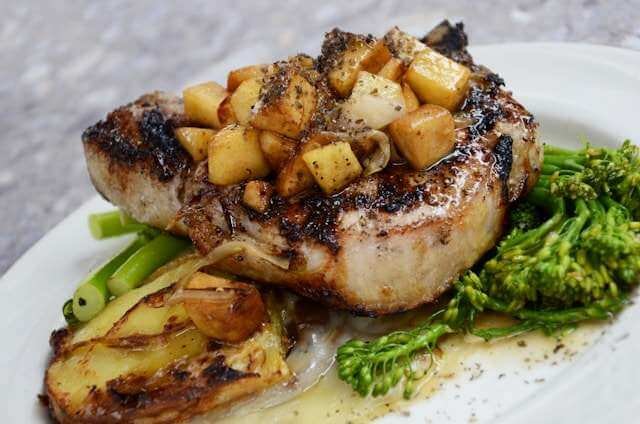
Health Considerations
Spanish cuisine is considered healthy due to its emphasis on fresh fruits and vegetables, whole grains, lean proteins, and heart-healthy fats from olive oil.
In fact, the Mediterranean diet, which is based on Spanish and other Mediterranean countries’ eating habits, has been linked to numerous health benefits including weight loss, improved heart health, and reduced risk of chronic diseases such as diabetes and Alzheimer’s.
However, it’s important to note that not all Spanish dishes are automatically healthy. Just like any cuisine, there are certain dishes that may be high in calories, saturated fat, and sodium. For example, fried foods like churros or patatas bravas can be indulgent treats rather than everyday staples.
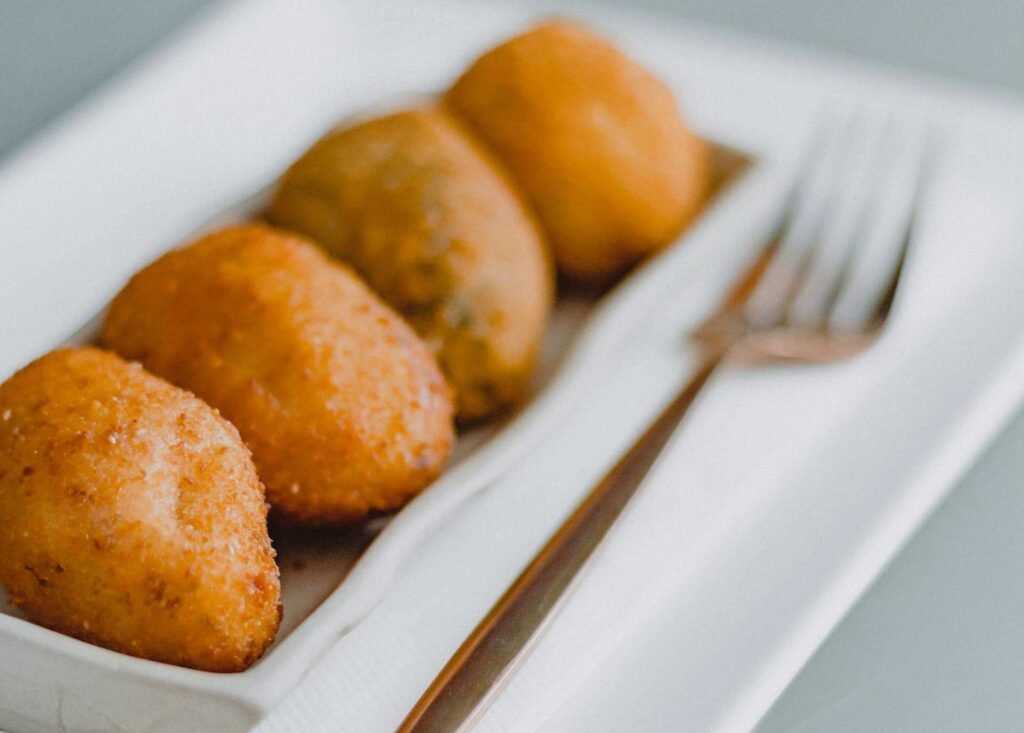
Traditional Accompaniments
A traditional Spanish meal often includes a variety of tapas (small dishes), a salad, a main dish of meat or fish, and a dessert like flan. Wine or sangria are commonly served with meals. Side dishes and accompaniments can vary depending on the region or personal preferences, but there are some popular traditional options that are commonly enjoyed.
Patatas Bravas: These fried potato chunks are typically served with a spicy tomato sauce on top. They are a classic tapa and can be found in most Spanish restaurants.
Gazpacho: This cold soup made of blended vegetables, usually tomatoes, cucumbers, peppers, and onions, is a refreshing and nutritious option. It is perfect for hot summer days.
Paella: Originating from Valencia, this rice dish is often considered the national dish of Spain. It typically includes a variety of seafood such as shrimp, mussels, and clams along with chicken or chorizo sausage.
Presentation
In Spanish cuisine, the presentation is simple yet appealing, with an emphasis on the fresh ingredients themselves rather than elaborate garnishes. The aesthetic of the dish is often described as rustic and homey, evoking feelings of comfort and tradition.
However, don’t be fooled by the simplicity. Spanish chefs are masters at incorporating bold flavors and textures into their dishes, creating a complex taste experience that will have you craving more.
Common Variations
Spain’s diverse regions each have their unique flavors and dishes. For example, the region of Valencia is known for its paella, while Andalusia is famous for its gazpacho. However, there are also some common variations of dishes that can be found throughout the country.
One popular dish that is found all over Spain is tortilla de patatas, or Spanish omelette. This savory dish consists of eggs, potatoes, and sometimes onions and other vegetables, cooked in a pan until it forms a thick omelette. It can be served as a tapa (small snack) or as a main course.
Another staple in Spanish cuisine is croquetas. These fried appetizers are typically made with a creamy bechamel sauce mixed with various fillings such as ham, chicken, or cheese. They are often served in bars as an accompaniment to drinks.
Pulpo a la gallega, also known as Galician-style octopus, is a popular seafood dish originating from the northwestern region of Spain. The octopus is typically boiled and then sliced into bite-sized pieces, served with olive oil, paprika, and salt.
For meat lovers, Spain offers a variety of delicious dishes such as cochinillo (roasted suckling pig) and chuletón de buey (grilled ribeye steak). These hearty meals are often accompanied by potatoes or other vegetables.
Preparation and Equipment
Some Spanish dishes may require specific equipment, like a paella pan for making paella. Certain elements of a dish, like marinated meats or soaking legumes, may need to be prepared ahead of time. Some recipes may also call for techniques such as grilling or roasting, which will require certain equipment. Be sure to read through the recipe thoroughly before starting to ensure you have all the necessary tools and ingredients.
Here are some of the most common tools, utensils, pots, and pans you might use when preparing Spanish cuisine:
Paella Pan (Paellera): This wide, shallow pan is designed specifically for cooking Paella, the famous Spanish rice dish. It allows the rice to cook evenly and develop the crusty “socarrat” layer at the bottom.
Mortar and Pestle (Mortero): Used for crushing and grinding spices or making sauces such as the traditional allioli (garlic and oil sauce).
Terracotta Cookware (Cazuela): These earthenware pots are used for a variety of dishes, from stews to tapas. They distribute heat evenly and add a rustic touch to the table.
Grill Pan (Plancha): A flat, rectangular pan used for grilling meats and vegetables.
Chef’s Knife: Essential for chopping, slicing, and dicing various ingredients.
Wooden Spoon: Perfect for stirring and mixing ingredients in pots and pans.
Pressure Cooker: Great for dishes that require a long cooking time, like the hearty Fabada Asturiana (bean stew).
Sieve (Colador): Used for straining broths or sauces, or sifting flour for desserts.
Tongs (Tenazas): Handy for turning and serving meat and other foods, particularly when grilling.
Wine Opener (Sacacorchos): Spanish cuisine is often paired with the country’s excellent wines, so a good wine opener is a must.
Citrus Juicer: Many Spanish recipes call for fresh lemon or orange juice, making this tool essential.
Flamenco Skewers (Pinchos Flamencos): Long, thin skewers used for making pinchos or tapas.
Churro Maker (Churrera): A tool used to form the dough into the distinctive churro shape before frying.
These tools will help you prepare a wide range of Spanish dishes. The exact tools needed will depend on the specific recipes you plan to make.
Wondering what tools a personal chef might need? I’ve written an extensive article for you – A Comprehensive List Of Must-Have Tools and Essential Items for the Personal Chef
Personalizing Spanish Cuisine
Personalizing Spanish dishes while maintaining authenticity can be achieved by adjusting flavors to suit personal preferences, substituting ingredients based on dietary needs, or presenting dishes in creative ways.
As a personal chef, I understand the importance of catering to individual tastes and dietary restrictions while staying true to traditional Spanish recipes. Whether you are looking for a unique dining experience or need assistance with special dietary needs, I am here to help make their meal unforgettable.
Spanish Food for Personal Chefs
Exploring and cooking Spanish cuisine offers an exciting culinary journey. By understanding its key ingredients, techniques, and cultural significance, we can bring the authentic taste of Spain to our clients’ dining tables.
Here are some of my favorite tools for providing my personal chef service
As an experienced personal chef, I’ve found that the secret to creating mouthwatering dishes goes beyond just having a passion for food. It’s also about using the right kitchen tools. Today, I’m going to share with you my must-have kitchen items that help me bring my culinary creations to life.
1. Chef’s Knife
The first item on my list is a high-quality chef’s knife. It’s the most versatile tool in my kitchen, perfect for chopping, slicing, and dicing. My preference is for a Global Chef’s Knife, known for the edge and the way they are balanced.
2. Cast Iron Skillet
Next up is a good old cast-iron skillet. From searing steaks to baking cornbread, this pan does it all. I love the Lodge Cast Iron Skillet, which retains heat beautifully and adds a nice crust to anything you cook.
3. Stainless Steel Pots and Pans
A set of stainless steel pots and pans is essential for a variety of cooking techniques. They’re great for simmering, boiling, and sautéing. All-Clad’s Stainless Steel Cookware Set is my go-to choice for its exceptional performance and durability.
4. Immersion Blender
An immersion blender makes pureeing soups, making smoothies, and blending sauces a breeze. I suggest the Braun Multiquick Hand Blender, which is powerful, easy-to-clean, and highly versatile.
5. Digital Thermometer
To ensure perfectly cooked meats every time, a digital thermometer is a must. The ThermoPro TP19 Waterproof Digital Meat Thermometer provides speedy and accurate readings, ensuring your roast chicken or prime rib is cooked to perfection.
6. Silicone Spatula
A silicone spatula is a chef’s best friend for its versatility. It’s heat-resistant, non-stick, and perfect for everything from folding batter to stirring sauces. I recommend the OXO Good Grips Silicone Spatula.
7. Stand Mixer
Lastly, for avid bakers, a stand mixer is a game-changer. The KitchenAid Artisan Series 5-Qt. Stand Mixer isn’t just a pretty face; it makes mixing doughs and batters effortless.
These are the tools that I use daily in my personal chef service. Remember, quality tools make a difference, but they don’t have to break the bank. Start with the basics and add on as you grow more comfortable and adventurous in the kitchen.
Happy cooking!
